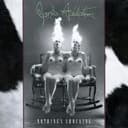Understanding the B Lydian Mode Structure
The B Lydian scale follows the interval pattern 2-2-2-1-2-2-1 (whole-whole-whole-half-whole-whole-half), producing the notes B, C♯, D♯, E♯, F♯, G♯, A♯, B. As the fourth mode of F♯ major, it begins on the fourth degree of that parent scale, sharing all the same notes but establishing B as the tonal center. The defining feature is the raised fourth degree (E♯), which would be E natural in B major, creating the signature Lydian sound that musicians describe as brighter than major, floating, or dreamlike. This single alteration—raising the fourth by a half step—transforms the grounded character of B major into the ethereal, ascending quality that makes Lydian essential for creating magical musical moments and sonic expansiveness.
Lydian in Film Scores, Jazz, and Progressive Rock
B Lydian occupies a prominent place in film music due to its ability to evoke wonder, transcendence, and magical atmospheres that elevate visual storytelling. Composers like John Williams, Jerry Goldsmith, and Hans Zimmer frequently employ Lydian harmony for scenes depicting flight, transformation, or awe-inspiring landscapes, using the raised fourth to create that signature "soaring" quality heard in countless cinematic moments. In jazz, B Lydian provides sophisticated harmonic color for improvisation over major seventh chords, particularly in modal jazz contexts pioneered by Miles Davis and John Coltrane where static harmony requires rich melodic invention. Progressive rock bands like Yes, Genesis, and Dream Theater utilize Lydian mode to create expansive, cosmic soundscapes that differentiate their sophisticated compositions from standard rock tonality, often alternating between Lydian brightness and darker modes for dramatic contrast.
Practical Applications and Chord Progressions in B Lydian
The characteristic B Lydian progression is I-II (B major to C♯ major), which immediately establishes the modal sound through the raised fourth and creates the floating, unresolved quality found in film scores and modal jazz. Other effective progressions include I-II-I (B-C♯-B), the modal vamp I-♭VII-IV (B-A-E—borrowed from Mixolydian for added color), and the ethereal I-II-III♯ pattern (B-C♯-D♯) that ascends through the scale's brightest intervals. The scale works beautifully over Bmaj7 and Bmaj7♯11 chords, providing luminous harmonic color that sustains indefinitely without needing traditional resolution. Compared to B major, B Lydian has a more expansive, transcendent character due to its raised fourth (E♯ instead of E natural), while maintaining the major third (D♯) that preserves brightness and optimism.
Learning Tips and Relationships to Other Modes
For pianists, begin by playing the F♯ major scale from B to B, which automatically produces B Lydian. This parent scale approach helps visualize the modal relationship and understand why B Lydian contains five sharps with the distinctive E♯. Practice the scale in both hands across two octaves, paying special attention to the E♯ to internalize the raised fourth sound. Alternatively, practice B Lydian by playing B major and raising the fourth degree (E becomes E♯)—this comparative approach develops modal awareness by highlighting the single note difference that creates the Lydian character. Understanding B Lydian's relationships to other modes unlocks creative possibilities for composition and improvisation. Compare B Lydian with E Lydian (down a perfect fifth) and F♯ Lydian (up a perfect fifth) to understand how Lydian mode functions at different pitch levels while maintaining its characteristic raised fourth quality.





